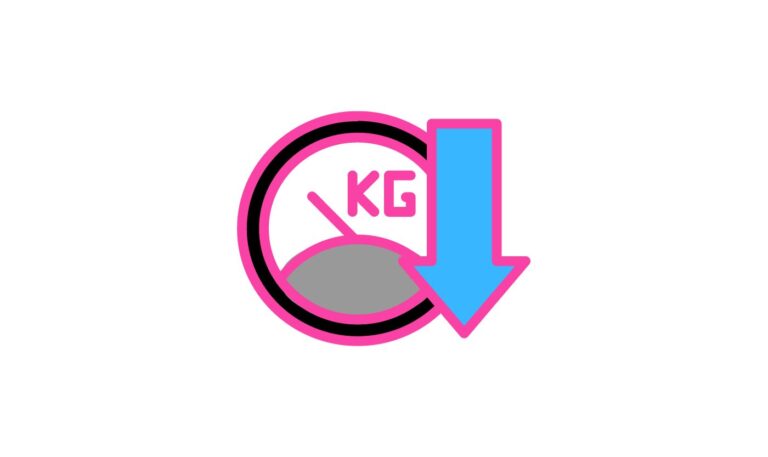Importance of Understanding Body Composition vs BMI
You’ve probably checked your BMI a couple of times but did you know that this standard measure for weight doesn’t provide a complete picture of your overall health?
It just considers your height and weight, ignoring the intricate makeup of muscle, body fat, bone density, and more. And that’s where body composition analysis comes in as it offers a deeper and more accurate understanding of wellness.
In this blog post, we’ll look at the flaws of BMI, what is body composition, the importance of understanding body composition, and how you can optimize your body composition.
Let’s get right in!
The Flaws of Relying on BMI
While BMI has long been used as a quick and straightforward measure of weight status, it is not without its flaws when it comes to assessing overall wellness.
Here are some of its limitations:
1. Neglecting Muscle Mass
BMI overlooks an essential component of our bodies – muscle mass.
Muscle is dense than fat, and individuals with higher muscle mass may be inaccurately categorized as overweight or obese, despite being physically fit and healthy.
2. Ignoring Body Fat Distribution
BMI fails to account for fat distribution in the body, which can significantly impact health. For instance, excess abdominal fat (visceral fat) is associated with an increased risk of lifestyle diseases.
Unfortunately, BMI does not distinguish between different types of fat deposits.
Examples of BMI Inaccuracies
- The Athlete
A dedicated athlete who engages in regular strength training and has a significant amount of muscle mass.
Despite having a low body fat percentage and exceptional cardiovascular health, their BMI might indicate they are overweight or even obese.
- The Fit and Lean Individual
Imagine a person who follows a balanced diet, exercises regularly, and maintains a strong and toned physique.
Despite having minimal body fat and optimal health markers, their BMI might suggest they are in an unfavorable weight category.
- The Older Adult
As we age, we lose muscle mass, which can lead to a decrease in BMI. However, this doesn’t necessarily indicate improved health.
In some cases, older adults with a lower BMI might have compromised muscle and bone health, posing a risk of frailty and mobility issues.
These examples illustrate how BMI can be misleading, providing only a partial snapshot of an individual’s true wellness. It disregards essential factors like muscle mass, body fat distribution, and overall fitness, leading to misinterpretations and sometimes unnecessary concerns about weight status.
Understanding Body Composition: A Holistic View of Wellness
With the flaws of BMI, let’s look at body composition, which provides a holistic view of wellness and how that can influence your wellness goals.
1. Muscle Mass: The Foundation of Strength and Metabolism
Muscle mass serves as the foundation of strength and physical performance.
With higher muscle mass, individuals experience better metabolic rates, making weight management easier.
Additionally, well-developed muscles enhance functional fitness, enabling ease in daily activities.
2. Body Fat: Striking the Balance
Body fat is essential for insulation, nutrient absorption, and energy storage. However, excessive body fat can lead to lifestyle diseases such as type 2 diabetes, hypertension, and heart disease.
Understanding body fat distribution helps you assess the risk for obesity-related conditions. It differentiates between essential fat (necessary for physiological functions) and non-essential fat (subcutaneous and visceral fat).
By monitoring body fat levels, you can take targeted steps to achieve a healthy body fat percentage.
3. Bone Density: The Key to Skeletal Health
Optimal bone density is crucial for maintaining skeletal health and preventing fractures, especially as we age.
Body composition analysis provides insights into bone mineral density, enabling early detection of bone-related conditions.
This information empowers individuals to take proactive measures, such as proper nutrient intake and weight-bearing exercises, to maintain strong bones.
4. Water Content: Vital for Well-Being
Water is essential for life, regulating bodily functions and maintaining fluid balance.
Monitoring water content ensures proper hydration, supporting nutrient transportation, temperature regulation, and waste elimination.
5. Visceral Fat: A Hidden Health Risk
Visceral fat, located around organs in the abdominal cavity, poses health risks not evident from outward appearance.
High levels of visceral fat increase the risk of metabolic disorders like insulin resistance, hypertension, and dyslipidemia.
Body composition analysis reveals visceral fat levels which can help in creating realistic goals to reduce it and lower the risk of related health complications.
6. Metabolic Rate: Understanding Energy Needs
Basal Metabolic Rate (BMR) determines the calories the body burns at rest. Knowing BMR helps individuals plan their nutrition according to their unique energy needs.
Why is It Important to Understand Your Body Composition?
Understanding your body composition opens the door to a more personalized and effective approach to achieving optimal wellness.
By focusing on the unique makeup of your body, you can tailor your lifestyle choices and fitness routines to meet your specific needs and goals.
Here’s how body composition analysis empowers you to take charge of your well-being:
1. Targeted Fitness Strategies
Body composition analysis reveals your muscle mass and overall body fat percentage, giving you valuable insights into your physical capabilities.
If you have lower muscle mass, you may benefit from strength training to build muscle and improve functional fitness.
On the other hand, if you have excess body fat, incorporating cardiovascular exercises and dietary adjustments can help you achieve a healthy body fat percentage.
2. Customized Nutrition Plans
With knowledge of your basal metabolic rate (BMR), you can determine your daily caloric needs more accurately. This understanding enables you to create a customized nutrition plan that aligns with your energy expenditure and wellness objectives.
Whether your goal is weight loss, muscle gain, or maintaining a healthy weight, a personalized nutrition plan ensures you fuel your body optimally.
3. Health Monitoring and Risk Assessment
Body composition analysis provides early detection of potential health risks. For instance, knowing your bone density helps you assess the risk of osteoporosis and take preventive measures.
Additionally, monitoring visceral fat levels aids in understanding your risk for metabolic conditions. Armed with this knowledge, you can make lifestyle adjustments to safeguard your long-term health.
4. Assessing Progress and Celebrating Achievements
As you progress on your wellness journey, body composition analysis serves as a powerful tool to track changes in your body. Regular assessments allow you to celebrate your achievements and stay motivated.
Positive changes in muscle mass and reduced body fat percentage reflect the effectiveness of your efforts and provide encouragement to continue your healthy lifestyle.
5. Setting Realistic Wellness Goals
Body composition analysis sets realistic and meaningful goals. Rather than solely focusing on the number on the scale, you can set objectives related to muscle gain, fat loss, or improvements in bone density.
These tangible goals provide a clear sense of direction and purpose, making your wellness journey more purposeful and satisfying.
6. Long-Term Wellness Strategies
The insights gained from body composition analysis support sustainable long-term wellness strategies. Rather than pursuing short-term fixes, you can embrace a holistic approach to health, considering physical changes and other factors like hydration and overall well-being.
This fosters a mindset of continual improvement and self-care, leading to lasting positive transformations.
How can You Improve Body Composition?
There are some lifestyle changes that you can incorporate in your life to improve your body composition. They include:
1. Resistance or Weight Training
Weight training is a powerful tool for moms aiming to improve body composition.
Resistance training increases lean muscle mass which elevates the resting metabolic rate, leading to greater calorie burn throughout the day.
And when done correctly, you don’t have to worry about getting bulky since women have low testosterone, responsible for bulky muscles in men.
Additionally, it has been shown to have significant benefits for bone density and overall functional strength.
2. Intermittent Fasting
Intermittent fasting (IF) is an eating pattern that alternates between periods of eating and fasting.
IF a great way of maintaining a healthy weight and improving body composition. Because of the limited eating periods, you’ll consume less food and prolonged fasting periods help in burning stored fats for energy.
When coupled with whole meals, proper hydration, and aerobic exercises, the transformation is remarkable.
3. High-Intensity Interval Training (HIIT):
HIIT involves short bursts of intense exercise followed by brief recovery periods. Research suggests that HIIT can be more effective for fat loss and improving body composition compared to traditional steady-state cardio exercises.
For moms with limited time for workouts, HIIT offers a time-efficient and effective approach to burn calories and increase the metabolic rate even after the workout is completed.
4. Mindful Eating and Portion Control
Practicing mindful eating and portion control is essential for achieving and maintaining healthy body composition.
Moms often face challenges with snacking and mindless eating. By being mindful of food choices and portion sizes, moms can avoid overeating, reduce calorie intake, and make healthier choices for their bodies and overall well-being.
5. Sleep Quality and Quantity
Adequate sleep is crucial for optimal body composition.
Poor sleep can lead to hormonal imbalances, increased appetite, and reduced metabolic rate.
A study published by the National Institute of Health found that individuals who slept for shorter durations had higher body fat percentages and a higher risk of obesity.
Thus, ensuring good sleep hygiene and aiming for 7-8 hours of quality sleep each night can positively impact your body composition.
For moms with younger children, this can be a challenge but you should aim at sleep training your kids and teaching them independence from a young age.
6. Stress Management
Chronic stress can have detrimental effects on body composition. When stressed, the body produces cortisol, a hormone that can lead to increased fat storage, particularly in the abdominal area.
Finding effective ways to manage stress, such as meditation, yoga, or spending time in nature, can help reduce cortisol levels and improve body composition.
7. Proper Hydration – Water is the best!
Water is essential for various physiological processes, including nutrient absorption, metabolism, and waste elimination.
According to the National Library of Medicine, adequate water intake enhances fat metabolism and overall energy expenditure.
Ensure you take your water throughout the day – when you wake up, before a meal, during a walk, or while resting. Reduce intake of carbonated drinks or fruit smoothies loaded with fructose.
Frequently Asked Questions
What are the main components of body composition?
The main components of body composition include fat mass, muscle mass, bones, and water.
How can you improve your body composition?
You can improve your body composition by eating a balanced diet, getting quality sleep each night, working out, getting some sunshine, rest, and hydrating enough.
Why is it important to understand the body composition?
It is important to understand body composition as this helps you set realistic goals, get personalized fitness and wellness programs, understand your body holistically and avoid unnecessary pressure from within or without.





